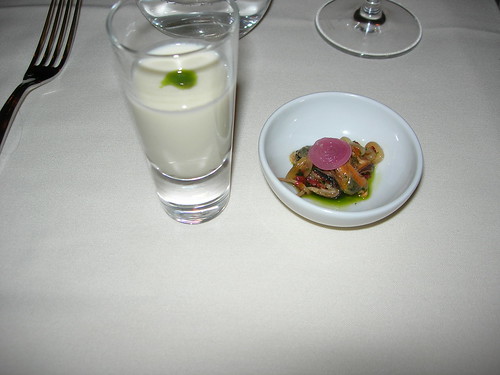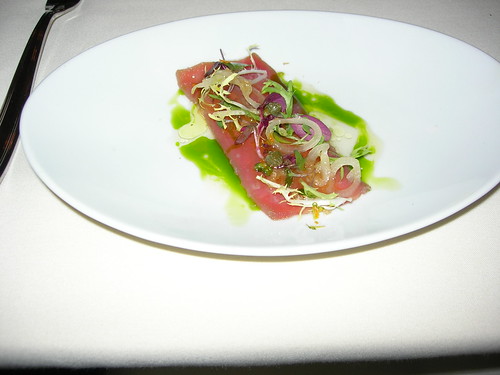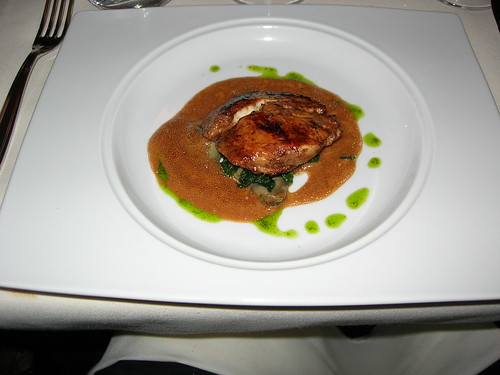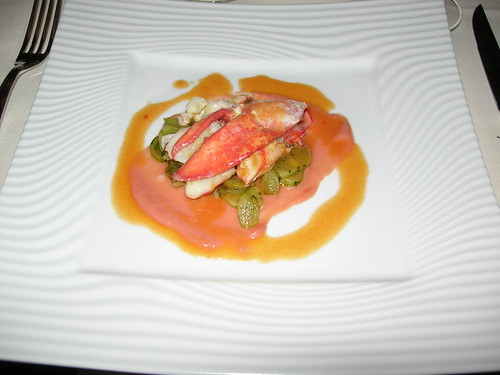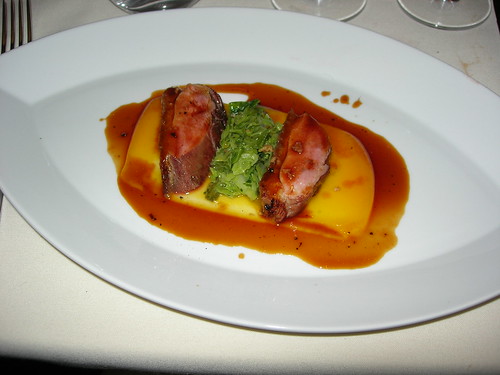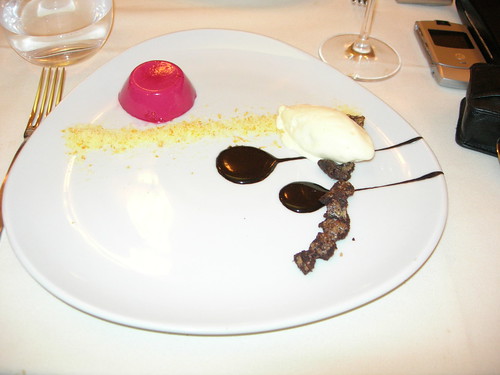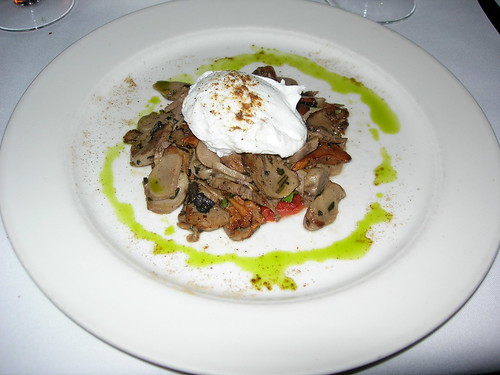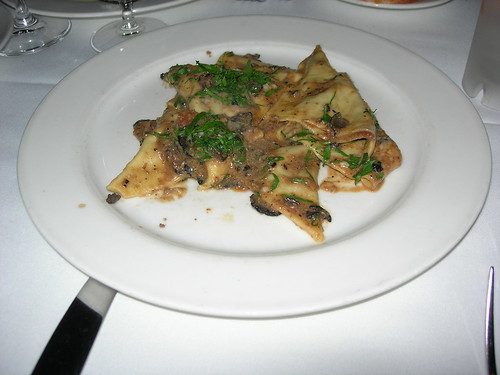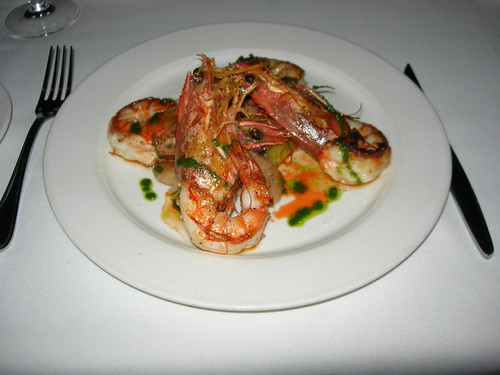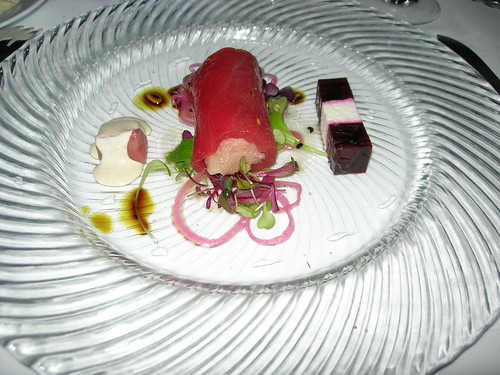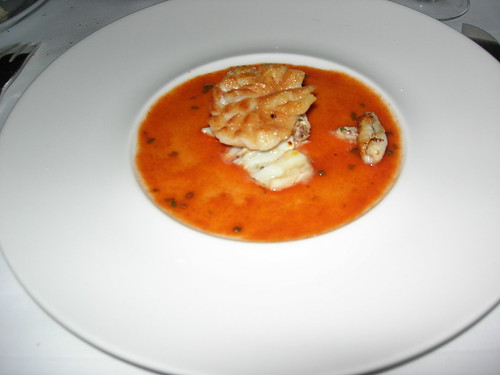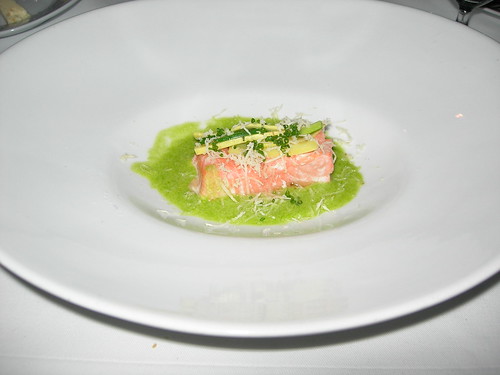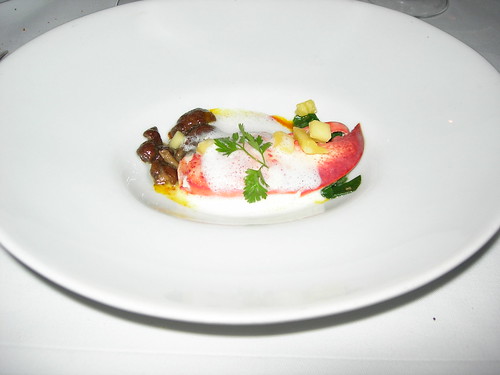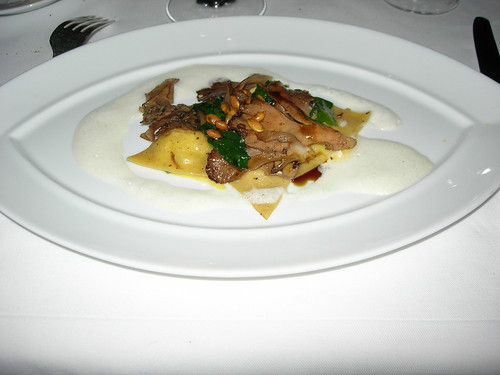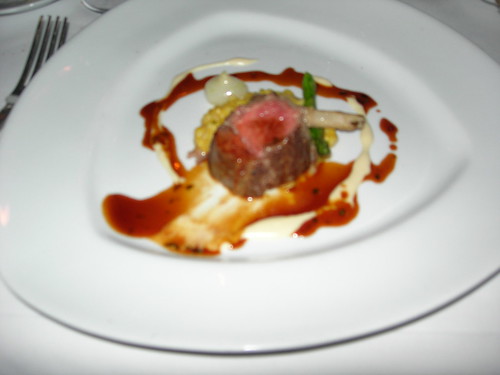Why tinker with a sharp formula? A decade ago I ate an astonishing meal at Nobu, Nobu Matsuhisa's haute Japanese TriBeCa joint. The evening was a rare experience that changes how one thinks about the possibility of cuisine. Borrowing from Europe and South America, Chef Matsuhisa invented for many diners a new way to think of Asian flavors and textures. A decade later in hope of preparing my palate for a visit (my first) to Tokyo, Kyoto, and Hiroshima, I returned, and Nobu is as almost as good as it once was , even if it is a victim of how much it has changed the world of dining. Chef Nobu has tough competition, and several of his iron colleagues and students can challenge the master. And, of course, the restaurant has cloned itself endlessly, creating a formulaic cuisine - Planet Kyoto.
Nobu is one of the wittiest restaurant spaces in the city. The sculptural trees that adorn the dining room suggest an ryokan set in a Japanese forest. It is dramatic without facile elegance, and it is never misses a thoughtful detail. Our waiter, pure American, was cheerful, knowledgeable and efficient.
We selected the high-end omakase dinner to which we added a tempura dish, creating a menu of ten dishes. While a few dishes did not stun, there were no failures. After a dozen years, a weeding-out process is evident. Perhaps Nobu is resting on its well-earned laurels, and one sometimes suspects that the kitchen is not charged with the gas of imagination, but the best dishes still tingle.
Although I rarely order or write about cocktails, the Matsuhisa Martini reflects the Nobu style. The mix of Level Vodka with sake, ginger and cucumber slices proved to be startlingly effective in awakening my palate. Not sticky sweet like many failed cocktails, these additions were quietly modulated.
Our opening appetizer (Nobu doesn't provide an amuse) was toro (tuna belly) tartare with a powerful and wicked wasabi soy sauce and Sterling (white sturgeon) caviar. The tuna and soy were set in a tiny crucible placed atop a ball of crushed ice. The drama was evident. We were impressed knowing that this was a meal that had been carefully calibrated. The wasabi jus was a fiery accompaniment, skating near the edge of pleasure. Diners were not given a choice, it soaked the toro. Eat or starve! I ate with tears in my eyes and a song in my heart. Confronting Nobu, one must be brave. To the side, a Japanese mountain peach, the size of a raspberry. Designed as a palate cleanser, it was a reward for clearing one's blazing plate.
The toro was quickly followed by a quartet of Kumamoto oysters, served with hot sesame oil, chives, ginger, and citrus soy sauce. This pile of oysters was sublime. I wondered whether sesame and citrus would be a match, but they were harmonious and in tune with oysters that were as perfect as bivalves could be. If the legions of phobes would be forced to eat these Kumamotos, a run on oysters would surely result. With its symphonies of pungent flavors, this was a star dish.
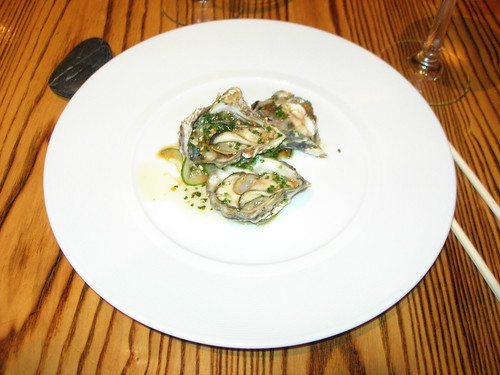
Our third course was Kanpachi (young yellowtail) sashimi. It was served with sesame soy vinegar and a haystack of micro-fennel. We tried to divine the subtle flavor of the micro-greens, not imagining that the farmers at Nobu grew fields of tiny fennel shoots. The display was stirring, and the kanpachi fresh and pure.
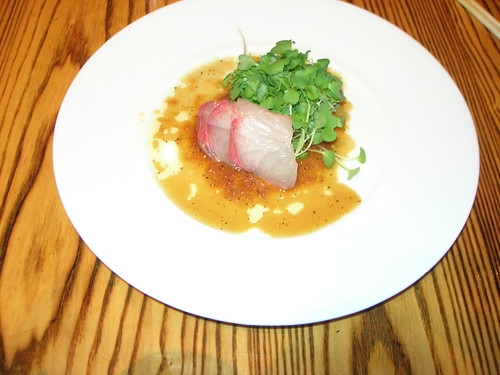
Our next course must have created by a lapidary with some slight assistance of a chef. We were served four slivers of Japanese red snapper, set in a pool of citrus (yuzu?) juice. On each slice was an aureole of forest green cilantro with a nip of bright chili sauce. One needed to nibble a morsel of the perfect fish before venturing into its combinations. The chili pepper provided a holy fire, an enchanted massacre. After the subtle dishes, we were reminded of the biting toro tartare.
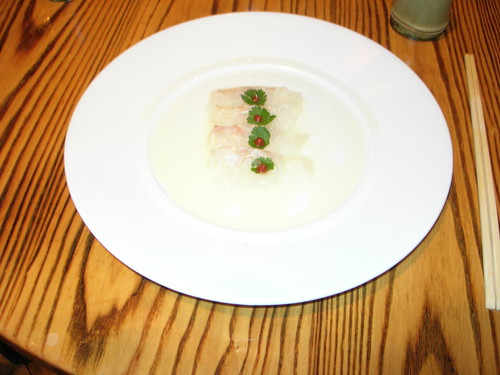
The fifth course changed the world. My two companions had never visited Nobu before, and so we were blessed by Chef Nobu's broiled black cod marinated in miso (four days to create the world). The cod was as buttery and sweet as one could imagine. Were it the naked cod, we would have spied heaven. However, Nobu's pickled onions are certainly the finest pickled onions that human hands ever touched, the foie gras was measured and devout, and the crispy Japanese mint leaf was transformed by a magician. That this dish has delighted so many diners for over a decade is a miracle. That it has changed the way New Yorkers have conceived of Japanese cuisine reveals that kitchens have cultural power. Nobu's Cod is a finalist for Dish of the Century.
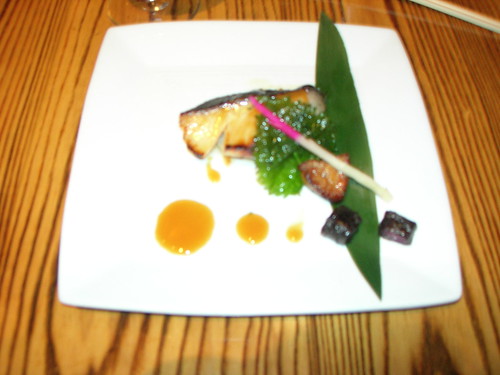
So ecstatic were we that the next plate - Kobe beef with a chili paste sauce, and red and yellow grape tomatoes on a lemon slice - was a disappointment. As one, we decided that the tomatoes were the chef's treat. Kobe beef is rather like truffles, foie gras, or caviar: unless used with inspiration, it announces conspicuous consumption. To suggest that the Kobe slices were "not bad" is to mock their precious pretensions, but we could have happily noshed on a bowl of tomatoes.
Feeling a bit peckish after the beef - and not wishing the meal to end quite yet - we ordered Rock shrimp tempura with ponzu and chili pepper served with a mound of micro-mache. This transformed the possibilities of tempura, a culinary domain that I hope to explore during my stay in Japan. As all dishes at Nobu, the presentation was sublime, dramatic and precise.
Sushi and soup is a transition to dessert. Our five pieces (otoro, belt fish, red snapper, king salmon, and orange clam) were exemplary, but after the rock shrimp, after the kumamoto oysters, after the miso cod, the sushi did not astonish, but only satisfied. As a palate cleanser sufficed.
I was not enchanted by Pastry Chef Jessica Isaacs' desserts. Japan is not a dessert culture. Tokyo is not Paris - I'll report back if my visit upends my bias. We were first treated to a mango citrus granita. This bowl looked like jewels, and was topped with edible gold leaf, but tasted like a routine and awkwardly chunky snow cone.
Our final sweet was a bento box composed of a Warm Valrhona Chocolate Souffle Cake with Shiso Syrup, White Chocolate Sauce and Green Tea Ice Cream. The elegance of the dessert critiqued the humble bento box. Ho ho. I licked the smooth and mild ice cream, but was left cold by the warm cake. I should not indulge in caffeine, often a struggle. Tonight, after a few small bites of a rich but ordinary cake I lacked desire to violate doctor's orders.
Nobu is an essential restaurant, the rising sun lighting TriBeCa. To be sure there is danger of Nobu becoming Hard Rock Café, but until cod is endangered, Nobu will remain more wonderland than Disneyland.
Nobu
105 Hudson Street (at Franklin St.)
Manhattan (TriBeCa)
212-219-0500
